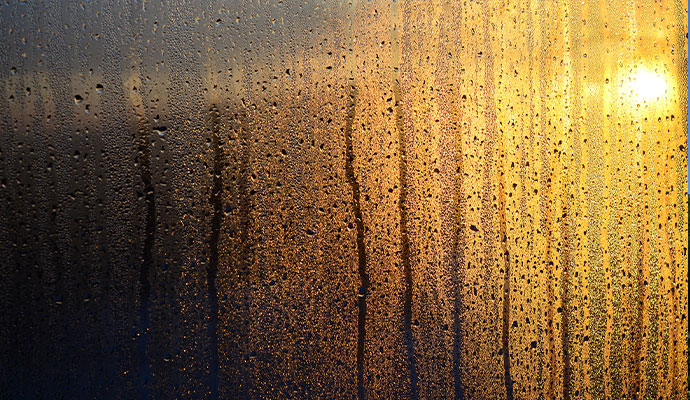24/7 Emergency Services
Prevent window condensation and humidity problems in your home
Projects Complete
- 24/7 Emergency Services
- Free Estimates
- Work Directly with All Insurance Companies
- Bonded & Insured
What Causes Window Condensation?
The coldest part of a wall is a glass window. In winter, as warm air in a heated home reaches that cold window, it cools and appears as condensation on the glass. Condensation is a process, where gas or vapor cools to change to a liquid form.
Window Condensation Problems
Window condensation causes water damage not only to the window itself, but also to the surrounding walls. Excessive interior window condensation can trickle to the windowsill and cause wood rot as well as peeling and blistering of paint on the walls near the affected windows. In addition, mold issues are not far behind, as they closely follow moisture problems that are left unrepaired.
Humidity Levels in the Home
Significant condensation on windows indicates higher than necessary humidity levels throughout the house. In fact, in wintertime, humidity levels in the home are optimal at about 40 percent. Higher humidity contributes to condensation and the growth of mold, bacteria and viruses, while lower humidity levels promote dry air, which has detrimental consequences on the health of family members, contributing to dry sinuses, nose bleeds and dry skin. In addition, low humidity levels have a drying effect on wood floors, furniture, musical instruments, and houseplants.
Excessive Condensation
High humidity is a concern as condensation in other, less visible, parts of the home can cause pretty significant damage and discomfort throughout the premises. Moreover, condensation, humidity and excessive moisture originating in one area of the house affect the entire home. For example, if attic insulation is wet or stained, there is moisture and condensation in an area of the house most people do not often monitor. Moisture in the attic can cause damages that are not as conspicuous as window condensation, but are nevertheless as undesirable and expensive to repair.
Excessive Condensation Solutions
To decrease condensation, controlling moisture and maintaining proper ventilation are important. One way to do this is to use exhaust fans in the laundry, kitchen and bathrooms. Insulating and sealing windows is an important first step in controlling window condensation. Additionally, installing storm windows or replacing older, inefficient windows with energy star alternatives would certainly help control some of the humidity in the home. For attic condensation, repairing leaky roofs, sealing ducts form air leaks, installing soffit vents and making sure these vents are not blocked should prevent many moisture problems.











